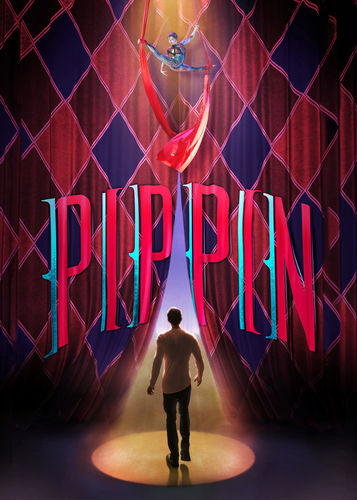‘Pippin’ enthralls audiences with over-the-top theatrics
In this special edition of my column, I will be reviewing a different kind of film. This weekend, I was once again shocked and surprised to see that the show Pippin was live, and there was music. I found myself watching another musical.
What can you expect when you go to see “Pippin” on Broadway? War, sex, history, comedy, romance, drama, self-discovery, a play within a play, acrobats, magic tricks, fosse dance moves: the list goes on and on, and the 2013 revival of “Pippin” has it all. I was utterly captivated by the theatrics of the story and the deep message of the story itself. “Pippin” will impress Broadway experts and new show-goers alike.
The show begins with an introduction to the circus atmosphere, which serves as the setting, and the Leading Player (Patina Miller) promising the audience the “greatest finale of all time.” Enter Pippin (Matthew James Thomas), the main character in the story. The circus is telling of his search for meaning in life as Charlemagne’s son.
Miller captivates with her great theatrical presence and her accent/lisp, designed to enhance her morally questionable character. Her fosse dance moves and incredibly toned physique alone were enough to keep me in a trance. Miller’s obvious powerhouse vocals and her participation in some of the more acrobatic stunts took her to another level, and overall I could not argue with her well-deserved Tony.
At the start of the show I mistook Thomas’s vocals for weak, though still appealing. Soon, I learned that this was intentional, as the growing strength of Thomas’s vocals mimics the character’s path to self-discovery. The character’s comedic timing added an extra element to  his character, whose delicate nature carries the storyline.
his character, whose delicate nature carries the storyline.
The actors who played Pippin’s father King Charles (Terrence Mann), his stepmother Fastrada (Charlotte d’Amboise), and grandmother Berthe (Annie Potts) veered on the side of theatrical, as their characters called for, and made for much of the comedic relief of the show. The trio has a plethora of Broadway experience and is enjoyable to say the least. Potts even lead the audience in a sing-a-long of “No Time At All” in a call and response fashion, and ended the number hanging in the arms of a man who was hanging from a hoop.
The second act takes a darker and more subdued turn, as Pippin is still left questioning his life’s purpose. The character has thrown himself into a deep depression when he is taken in by a widow named Catherine (Rachel Bay Jones) and her son Theo. The character, as well as the player -remember that this is a play within a play- are beginning to experience the pleasures of a simple family life.
Jones plays her character of Catherine as cute, quirky, and relatable while letting her character as a player shine through. As you can tell, the plot gets a little confusing at this point, but it will make much more sense as an audience member. The play within a play aspect of the show is one of the things that makes it so dynamic.
The diverse musical numbers also add to the show’s changing nature. From the aforementioned sing-along, to high energy company numbers like “Magic to Do,” to Pippin’s simple but powerful “Corner of the Sky,” each song feels new and different.
The choreography, acrobatics, circus elements, and magic tricks are enough to keep even the most easily-distracted audience member enthused and interested. The choreography in “War Is a Science” is perfectly timed, with sharp and quick movements. The acrobatic and gymnastic stunts throughout the show are amazing and included trapeze, silk, and hoop work.
Though the theatrical elements draw the audience in, the true meaning of the story, which I won’t give away, will make you realize how phenomenal of a show “Pippin” truly is. Whether you have experience going to the theater or have never been before, I would recommend “Pippin” and will promise you will not be disappointed.
Karly Horn is an A&E Editor for The Patriot and jcpatriot.com.



